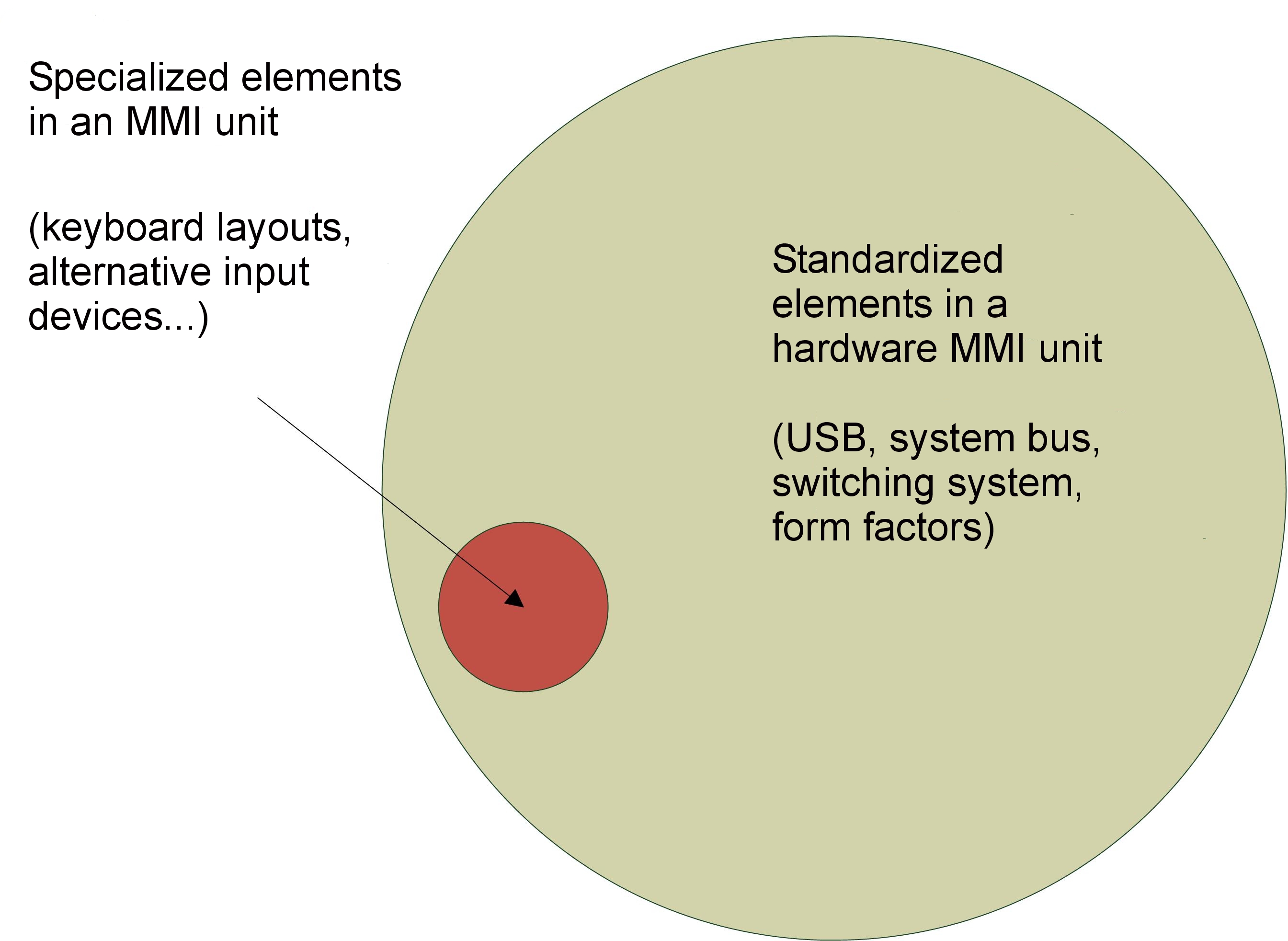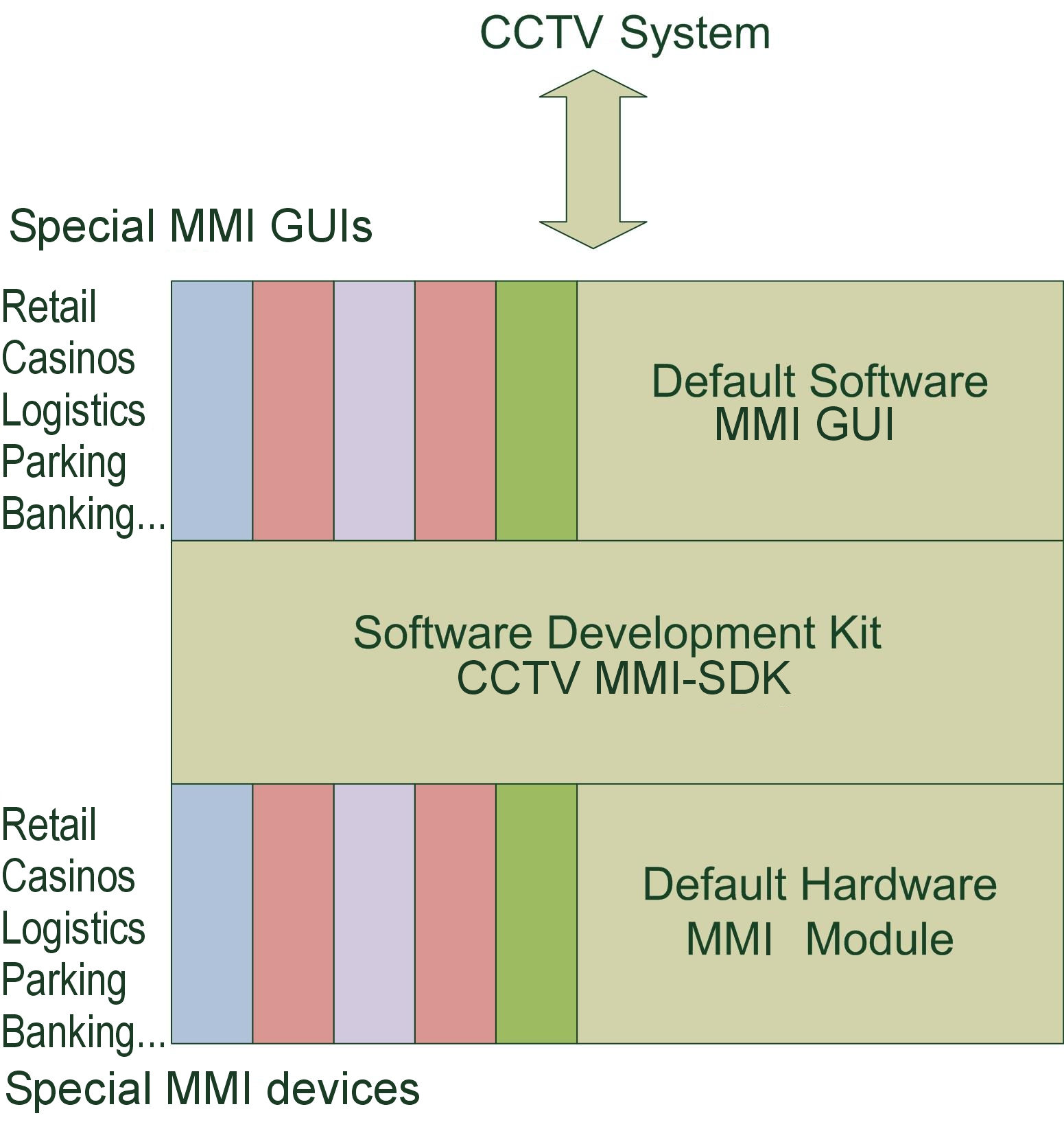Gone are the days when CCTV could be regarded as a separate security system, independent of its application environment. Today users want video to be integrated with their own working procedures so that CCTV reaches directly into the business processes. However, this combined with the increasing complexity and variety of the technical systems and the enormous data flows generated, particularly by CCTV, all add up to high demands on the man-machine interface (MMI). Rather than present options and technical limitations which force the user to adapt his procedures and risk reducing his performance, the ideal man-machine interface should instead put his needs first and mirror his processes. It should filter the information he requires for his particular activity and provide ergonomic operating devices which enable him to execute complex tasks rapidly and effortlessly, even in fast-moving situations.
Gone are the days when CCTV could be regarded as a separate security system, independent of its application environment. Today users want video to be integrated with their own working procedures so that CCTV reaches directly into the business processes. However, this combined with the increasing complexity and variety of the technical systems and the enormous data flows generated, particularly by CCTV, all add up to high demands on the man-machine interface (MMI). Rather than present options and technical limitations which force the user to adapt his procedures and risk reducing his performance, the ideal man-machine interface should instead put his needs first and mirror his processes. It should filter the information he requires for his particular activity and provide ergonomic operating devices which enable him to execute complex tasks rapidly and effortlessly, even in fast-moving situations.
How to realise this ideal has been the focus of a recent design project at Geutebruck GmbH as the company set about producing a new MMI to match the capabilities of its highly customised video security systems. Here we outline the logic and philosophy behind the design process.
|

|
|
Figure 1: CCTV-MMIs old and new
|
Cooperation between software and hardware
Traditional CCTV control panels have rigid operating philosophies and very little adaptability to users' particular needs. The only flexibility available for customizing for individual processes is often in the software. And, where standard un-adapted hardware is used the input devices are considerably less than ideal with ergonomics suffering. PC keyboard, mouse or joystick simulations like jog/shuttles are no match for the handling comfort, convenience and speed offered by specially designed hardware devices.
The ideal CCTV operator interface needs to resolve this apparent conflict between flexibility and ergonomics. Ideally what's required is the flexibility of a software interface which uses the resources and development tools from standard PC technology and operating systems, combined with the ergonomics of bespoke input devices, all in a consistent design. Of course this means the hardware has to be designed to incorporate the same degree of flexibility for individual requirements as one expects from software.
Looking at the hardware, here are some examples of the requirements:
*easy expansion with additional operating and input devices such as microphones or user-specific keyboard layouts,
* complete freedom of choice on the arrangement, size and order of the individual operating devices when assembling a console,
* freedom to define the mode of operation of the operating devices within the customer's set procedures and
* the exclusion of non-task-related (and therefore irrelevant) operating devices.
To meet these it makes sense to use a modular hardware structure and Fig 2 shows how the operating functions can be grouped in separate devices.
|

|
|
Fig. 2: CCTV-MMI hardware modules
|
The level of in-built flexibility available for adapting each device to meet different user requirements is also dependent on the device's ability to use the same components for many different purposes. Multiple use is maximised by considering the degree of standardisation of construction and technical switching solutions, as well as form factors (what size component is used), together with standardisation of device communication using a common system- and power supply bus.
The latest standards and technologies such as: USB, HID (Human Interface Design), embedded PC platforms and capacitive touch screens have significantly reduced the development costs for producing customer-specific input devices. Consequently, if the basic framework is defined first, the specialised elements of a hardware interface, maybe a keyboard with a customer-specific layout, or a special kind of input or output device, only represent a small proportion of the total development work involved. This also means development is faster and customized hardware is almost as flexible as software.
|

|
|
Figure 3 The proportion of specialist development involved in a standardised hardware MMI unit.
|
Even the high demands made on the software element of a CCTV interface are now relatively easy to meet using the latest technology. Instead of having to use expensive and relatively inflexible firmware embedded in special platforms, product developers can now incorporate complete PCs — taking us into completely new realms of customising potential.
An MMI with a PC-based standard operating system can be customised by a software developer with standard tools. If it comes with an SDK (software development kit) this gives the development programmer complete control for adapting the interface to meet the customer's needs. It facilitates easy access to the MMI hardware peripherals (e.g. keys, joystick, jog shuttle, microphone, loudspeaker etc.) and enables the interface hardware's in/output operations to be freely assigned to control the user's processes. Software which supports the latest touch-screen technology also allows extensive changes to the operating philosophy of the MMI hardware without making hardware additions.
|

|
|
Figure 4 Incorporating flexibility into an MMI using software development kits (SDKs), specialised graphical user interfaces (GUI) and hardware devices
|
Conclusion
Fortunately, as video security systems become more complex and are used for more and more different purposes, new technologies are appearing which allow the man and the machine to communicate more easily and efficiently. An MMI with in-built flexibility for extensive customisation now enables the user to exploit sophisticated technical systems to the full and make it seem like second nature and the ideal situation in which the operator has his very own MMI is no longer a pipe dream.